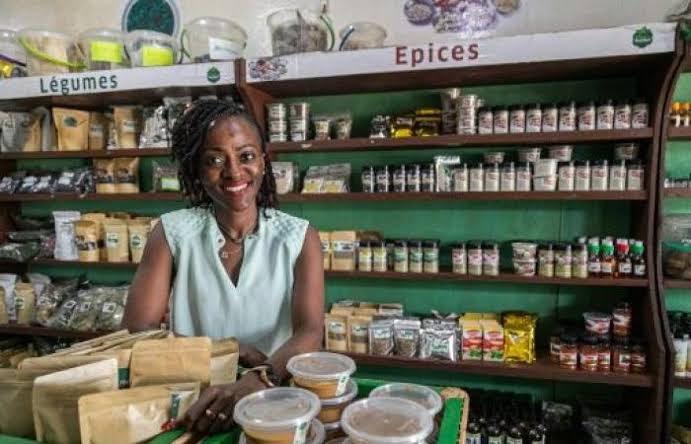What was thought to be a “crazy gamble” four years ago by Gaelle Laura Zambou Kenfack; the young entrepreneur has never looked back since creating a firm to produce and sell “Made in Cameroon” items.
Zambou returned to Cameroon at the end of 2016 after 10 years working as a consultant for BMW in Germany; the one-time colonial power in the central African country of some 25 million people, highly dependent on imports.
Made in Cameroon
Other business leaders like her are betting on the “Made in Cameroon” (MIC) mark; a concept formally launched by the private sector five years ago to promote local production, processing and consumption.
Stores labelled “Made in Cameroon” have already opened in several cities across the country. “Five years ago, there was only one store dedicated to the MIC mark. We are now at 33,” says Carine Andela, president of a group calling itself the Association of Ingenious Entrepreneurs of Africa (Asenia).
Andela has taken up fish farming. Aquaculturists have until now imported a lot of their fry — juvenile fish — from neighbouring Nigeria, but; “what is interesting is that some young people have started growing them themselves,” she says.
But it’s ‘Not rocket science’
In Africanews, In Biyem-Assi, a popular district of the capital Yaounde, Zambou’s company Kenza Market was one of the first MIC businesses to open. Spices, dried fruits and vegetables, vegetable oils for the skin, or marinades, line the shelves.
One of the flagship products of the store is “spicy salt”, a mixture of salt and several local spices. “Our concept is to promote MIC by highlighting local products because that is what makes the economy grow,” said Zambou.
To ensure regular supplies for her shop, Zambou is in contact with a dozen local producers from whom she buys raw materials before processing them. She has another store in Douala, the main port and economic capital of Cameroon, and wants to open more shops quickly.
Samuel Safo Tchoffo, a former oil industry engineer, has also taken the plunge in creating his own company. Its pilot pumpkin seed-shelling plant is located in Montee Jouvence, another working-class district of Yaounde.
“It took 27 years of research to get to this factory,” Safo says with a broad smile. The production line is made up of a chain of 11 machines assembled to convey, shell and sort the pumpkin seeds, then press the kernel to extract oil.
“The machines are totally made in Cameroon, and we made it a point of honour not only to process product locally, but also to show young people that it can be done — and that it is not rocket science,” explains Safo, whose plant also produces soap and low-fat flour.
“I am interested in the virtues of this oil,” customer Juliette Mbango says during a local fair. “I’ve often heard about it. I came to buy some to discover it for myself.”
Challenges faced by Made in Cameroon
For all the public interest in MIC, management consultant Edith Laure Pokam argues that the label suffers from major handicaps.
“Many consumers are willing to buy what is made locally, but they have doubts about the quality,” she says.
Price is another obstacle. “The promoters of MIC products are not yet able to compete with imported goods because the latter are cheaper.”
Entrepreneurs are aware of the difficulties.
For Andela, the “Made in Cameroon” movement definitely has a future, but also has some basic problems, especially for funding to buy machinery and raw materials.
“Political force is what can change things,” Andela believes. “Some people have not yet understood the stakes of what we are doing.”

